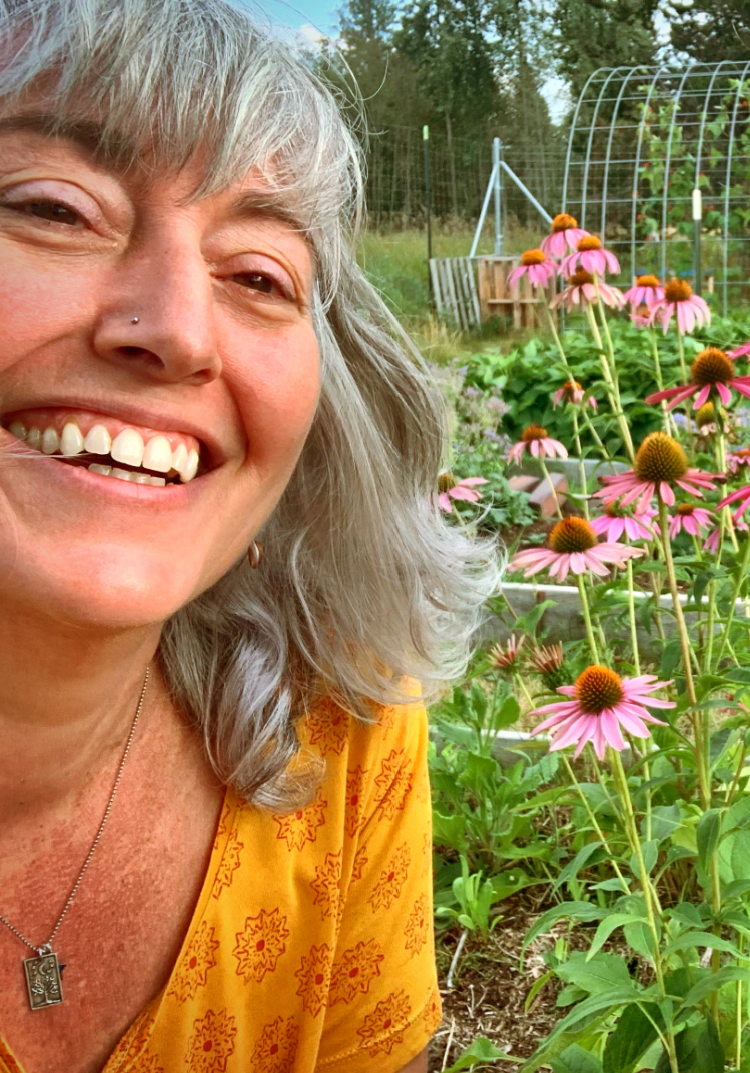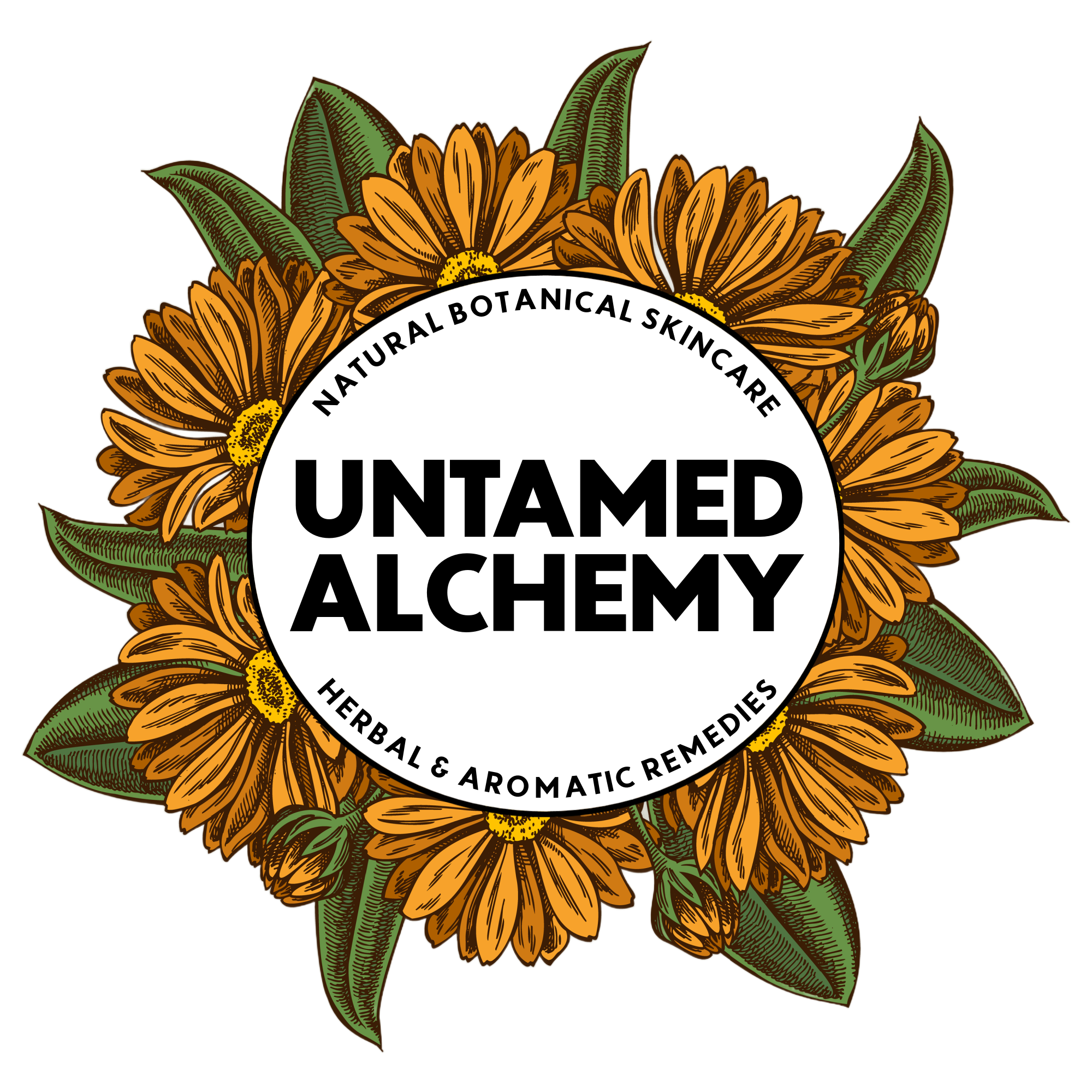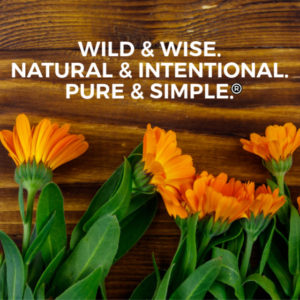There’s LOTS to love in the world of aromatherapy and herbalism. While I always have “favorites”, I find myself turning to new essential oils at different times depending upon both my mood and my clients’ needs, new books turn up that capture my attention and “old” books resurface to enchant me again, and changing seasons hearken me to old herbal favorites. These are just a few of my favorite things right now:
Diffusing with the Wood Stove
 While it’s not exactly winter yet (or even as cold as it’s going to get), we are already indulging in our wood stove some chilly evenings.
While it’s not exactly winter yet (or even as cold as it’s going to get), we are already indulging in our wood stove some chilly evenings.
The cozy warmth of the fire and the radiating heat are delicious to our bodies and our spirits.
Since we have a true wood stove with a flat top, we often place a small, cast iron pot with water and a diffuser blend of essential oils on the stove to both add to the atmosphere and infuse our environment with yummy, invigorating fragrance.
Though we often place just a few drops of a single oil in the pot, we have recently been enjoying a diffuser blend that elevates the ambience of the fire: a blend of equal parts Douglas Fir (Pseudotsuga menzies), Cypress (Cupressus sempervirens), Balsam Fir (Abies balsamea), and Indian Cedarwood (Cedrus deodara).
Just a few drops in the pot with a bit of water feels like an enchanted forest walk that elevates our spirits and improves our outlook.
Yuzu (Citrus junos) Essential Oil
Oh, sweet, enchanting Yuzu. I have had this oil in my arsenal before, but somehow managed not to reorder it for some time — until last week, when autumn’s cloak began to fall over our Idaho landscape. Anxious to have an uplifting, citrus-based fragrance to help invigorate me, I snatched up a bottle and, ohhhhhhhh, my….
There are times, like now, when a “simple” sweet orange, lemon, or lime won’t do for me. I use them so often in my blending and workshops that they can become old hat. I am no less enchanted by their therapeutic and energetic properties, but I feel like my palate needs to be tickled by something new and more exotic: Japanese Yuzu is just the thing!
After such a long time without Yuzu, I am powerfully impacted by its complex charm. It’s like having a master-crafted microbrew after a looooooong stretch of Budweiser.
Yuzu’s bright tangerine-y/mandarin-ish aroma and whisper of flowers are exactly what I needed. I combined Yuzu with Clary Sage, Lavender, and just a couple of drops of Rosemary ct verbenone and Peppermint for an amazingly refreshing blend added to my African black soap. It’s been the perfect pick-me-up every morning!
I used a stock blend created with 40 drops of Lavender (Lavandula angustifolia), 20 drops Clary Sage (Salvia sclarea), 20 drops Yuzu (Citrus junos), and 5 drops each of Rosemary (Rosmarinus officinalis ct verbenone) and Peppermint (Mentha x piperita). I then added my stock blend to my African black soap in a 1.5% dilution. (As always, your oils, ratios, and dilutions should reflect what is safe for you.)
The Complete Aromatherapy & Essential Oils Handbook for Everyday Wellness by Nerys Purchon & Lora Cantele
 I have read countless book in general and have at least a hundred books in my aromatherapy library specifically. Just released (and out of stock multiple times already on Amazon…), this book is new to my library: it’s a fun read and a wealth of information. I’ve been delighting in it since it arrived.
I have read countless book in general and have at least a hundred books in my aromatherapy library specifically. Just released (and out of stock multiple times already on Amazon…), this book is new to my library: it’s a fun read and a wealth of information. I’ve been delighting in it since it arrived.
As an aromatherapist and an educator, I am often asked, “what would be the one book you would recommend to set someone up for success in using with essential oils for my family at home?”
This would probably be that book.
Having had a chance to enjoy the book for myself now, I expect to order a few in for my students as well.
The handbook provides a wonderful jumping off point for those interested in learning and blending straightaway as Nerys and Lora have provided a comprehensive volume with both breadth and depth.
This book:
- empowers you to work safely and effectively
- speaks to a wide variety of essential oils
- provides detailed information for unique contraindications
- outlines safe blending practices
- includes information on blending for babies and children
- offers invaluable base recipes and insight into carrier oils, hydrosols, and infused oils, and
- provides a HOST thoughtful remedies and recipes for personal care, wellness, and the home
With a user-friendly layout and helpful, thoughtful tone, the book is relevant and useful for both aromatherapy beginners and experienced blenders.
Tips and cautions are provided in the margin and helpful reminders, “links”, and resources are provided throughout the book. Compelling information for each oil, including subtle energetics, is provided in a master list of essential oils. Relevant oils for individual concerns are also conveniently included where you want them most–right below the concern you seek to address! The recipes provided leverage the broad spectrum of essential oils outlined, but most do not require you to have dozens of oils on hand to craft them; handy substitutions are also provided for those who may not have a particular oil on hand.
If you are eager to begin crafting your own aromatherapy products for the benefit of your family’s wellness, this book provides a thoughtful, up-to-date, and comprehensive way to begin safely working with essential oils to address your concerns and improve your quality of life. Even if you are an experienced blender, the book provides many useful tips and fresh insights. I’ve been working with essential oils for decades and I have still enjoyed settling in with this book each night!
Horsetail Tincture
I bought our new home in Idaho in the late winter/earliest spring–before there was any way to really know everything that was already growing on the property.
The previous owners assured me there were lots of beautiful flowers and perennials, but I was equally interested in those “weeds” and volunteers that could be wild-crafted for use in my herbal tinctures and infused into my carrier oils.
While I used to wild-craft from the trails and mountains in Taos, New Mexico, with my mentor, Lucy, I was really hoping our new home would offer some bounty–I loved the idea of walking out of the house with the dogs and collecting what I needed from my very own “yard”. And I imagined creating magical windowsills like those at I had in New Mexico…

Spring and summer were full of surprises and blessings in our new home. Among the many delights that emerged on our Idaho property this year, we found a host of medicinal herbs! Dandelion, mullein, St. John’s Wort, plantain, thyme, and horsetail (and more…) were all over the place! While I opted to leave some, like the St. John’s Wort, to proliferate for next season, I gleefully wild-crafted enough horsetail to make one of my favorite tinctures.
For the past few years, I have looked to horsetail (Equisetum arvense) to help my system transition from Indian Summer to autumn. This ancient herb has an incredibly high silica content and is considered to be strengthening to the immune system. Traditional herbal medicine says it builds bone, nerve, and muscle. (Handy, since I broke a finger last week….) It’s also said to be great for urinary tract/prostate cleansing.
Since horsetail has weathered time and evolution for, oh, 350 MILLION YEARS, I like to think it has mastered time and change.
To wit, I make a horsetail tincture every year to help me manage seasonal change in my life and support my body into the colder, darker times. (Note that YOU shouldn’t be ingesting horsetail if you are pregnant or nursing, have high blood pressure, or suffer from kidney issues.)
Horsetail Tincture
A simple tincture featuring the ancient magic of horsetail to facilitate healthy transition and change.

Ingredients
- 16-oz jar with a tight-fitting lid
- Small, dark cobalt or amber glass bottles for storing
- Glass measuring cup with a spout for pouring
- A fine strainer
- Cheesecloth or muslin
- A relatively small stainless steel funnel
- Labels
- High-proof alcohol (at LEAST 80 proof)
- Fresh (or thoroughly dried) horsetail herb
Directions
- Step 1 If using fresh herbs, crush and macerate them slightly with a mortar and pestle.
- Step 2 Fill your jar 3/4 full with fresh herbs (half full if you’re using dried herbs) — don’t overstuff the jar. Your herbs should be below the top of the jar. Your resulting ratio if using fresh herbs should be approximately one part herb to two parts vodka (1:2). For dried herbs, it should be about one part herb to four parts vodka (1:4).
- Step 3 Label your jar with the date you put them by. Set them aside in a cool, dark place.
- Step 4 Shake the jar EVERY day for the first week. Let it sit still for another four weeks or so before preparing to strain it.
- Step 5 To strain, line your strainer with two layers of muslin or cheesecloth and place it over your measuring cup. Pour your tincture into the strainer and allow to filter into the cup below. Press gently on the herb to extract more tincture. You can twist and tighten the muslin or cheesecloth to “press” the remainder through.
- Step 6 Use the funnel to pour your tincture into your bottles. Place the cap on each bottle and label with the decanting date. Store in a cool, dark place.
I take a dropper full 3-4 times per day for no more than a month at a time. What you do will depend on your knowledge as to whether or not horsetail is advisable for you in the first place, next on your tolerance.
As always, identify your unique contraindications and check with your health care professional before incorporating any herb or essential oil into your wellness practice. Nothing provided here is intended to diagnose, cure, or prevent illness or disease.






